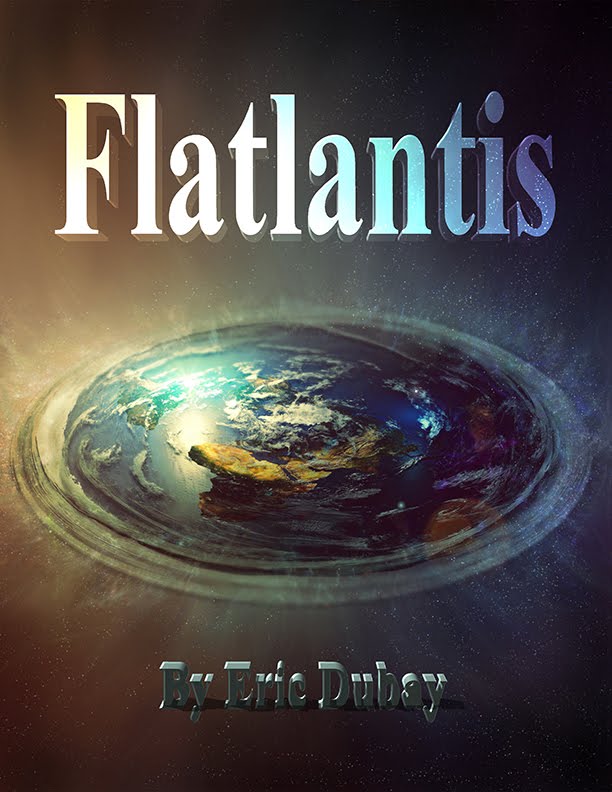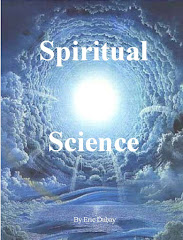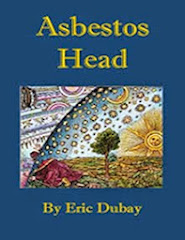Every day in Mecca, Saudi Arabia, thousands of Muslims gather and walk westward circles around a tall black stone cube called the Kaaba. This Kaaba stone lies at the very center of Islam's most important Mosque, the Great Mosque of Mecca, and is the most sacred site in Islam, said to be the "Bayt Allah" (House of God), where all Muslims must turn to face before daily prayers. The most common epithet often used for Kaaba translates to "the center of the Earth," and in the 9th century, Islamic scholar al-Kisa'i argued that the true Kaaba was actually located directly beneath the North Pole Star. This would mean the true Kaaba is actually Mount Meru, and not the large black stone worshipped in Saudi Arabia. This would mean that every day thousands of Muslims walk westward circles around Kaaba, just like every night thousands of stars rotate westward circles around Mount Meru. This would mean that just like the ancient Chinese and Greeks would face North before commencing prayer, that Muslims too are meant to be facing the North Pole, rather than Saudi Arabia. Many legends of Mount Meru claim it to be a mountain composed of black magnetite stone (Mercator's "Rupes Nigra") surrounded by four directional rivers and islands, and this is again echoed symbolically by the black stone (4-sided) cube at Mecca. Why does this black cube in Mecca so perfectly mirror the ancient myths of Mount Meru? Could this manmade construction in Saudi Arabia be usurping the placement of the true "House of God" at the North Pole?
"Many sacred centers are aligned to the four cardinal directions: the Purple Forbidden City has four gates opening out to the four cardinal directions; the Throne Room of the Royal Palace of King Mindon, a perfect square oriented to the cardinal directions, was in the middle of Mandalay, which is thought to be the center of Burma, and hence of creation; above the throne room rose a gold-plated, seven-story, 256 ft tower or pyathat, which was thought to funnel the wisdom of the universe to the king in its center. The Great Temple Tenochtitlan (now Mexico City) was at the center of the island, the first spot colonized, and the spot where the eagle eating the serpent on the cactus was seen, and the sacred precinct had gates in the four directions. And many other examples of sacred centers oriented to the cardinal directions come to mind - not least the Garden of Eden with its four streams. The city of Beijing is known as the 'Pivot of the Four Quarters,' and the sacred center of the city, the Forbidden City, is more precisely known as the 'Purple Forbidden City', purple being the symbolic color of the North Star, and the designation 'Purple Forbidden City' thus signifying that the emperor's residence is the center of the world. Where is the center of the world? Is it the omphalos in the adytumof Apollo's temple at Delphi? The 'Navel of the World' pillar in the catholicon of the Church of the Holy Sepulcher in Jerusalem? The temple of Madhyameshrava, 'The Lord of the Center,' in the holy city of Benares, India? Easter Island in the South Pacific, whose ancient name, 'To Pito o Te Henua,' means 'The Navel of the World'? The stone marking Kilomètre Zéro on the Ile de la Cité, Paris, just in front of Notre Dame? The Kanro-dai pillar at the Tenrikyo Main Sanctuary in Tenri, Japan? The monument at El Mitad del Mundo, 22 km north of Quito, Ecuador? Lake Poso in the center of the island of Sulawesi, Indonesia, the pivot of the earth and heavens, and the spot where a rope once joined the two?" -Chet Van Duzer, "The Mythic Geography of the Northern Polar Regions"
It is of course impossible for these pillars, temples and churches to all be "the centers of the world," which only further proves the point that none of them are authentic, and they are each merely symbolic representations. The one and only true centerpoint of all creation, the navel of both the heavens and Earth, is undeniably the North Pole, but by giving us all these symbolic facsimiles and by turning Earth into a gigantic tilting sphere spun around the Sun, the North Pole has effectively been nullified in the minds of the masses as being the true natural sacred center of the universe.
Ritual, reverential circumambulation, like that of the Muslims around Kaaba, is a practice found in many cultures throughout history. Hindus in India plant sacred Tulasi shrubs in their courtyards with ample space around for reverential circumambulation, known as domestic pradakshina. They repeat this perambulation 108 times while reciting the 108 names of Vishnu keeping their right shoulder turned towards the plant, mimicking the revolution of the celestial bodies around Polaris. Similarly at Vishnu temples, devotees walk circles around the outside either 7 or 108 times always keeping their right shoulder towards it. Buddhists in Sri Lanka circumambulate their dagoba shrines the same way. The sacred Adi Granth, the Sikh bible, is kept at the Golden Temple of Amritsar where devotees perform ritual reverential circumambulation around the sanctuary that houses the book, 3, 5 or 7 times. Christian bishops when consecrating a church make 3 circuits around the building sprinkling holy water and priests perambulate the altar incensing it while reciting a prayer which includes mention of this circular worship: circumdato altare tuum, Domine. Several initiation rituals of the Freemasons include circumambulation around central-placed shrines. The stringing of lights around a Christmas tree topped with a star is another example of this tradition mimicking the luminaries revolution around Polaris, and the reason a god-like figure "Santa Claus" resides at the North Pole.
"Then there is the old Highlanders' ceremony of going deisiil, 'sunwise,' round chapels, houses, people, and cattle; now done for luck, but preserving for us a lingering trace of the worship practised by their ancestors. It is also done round graves, and it was a common custom to turn oneself round to the right at the beginning and end of journeys for luck, as well as at weddings, and on other occasions. The 'turn round three times and catch who you may' of children's games will here occur to any one; and the catching may hang on to the practice of securing a victim for human sacrifice pointed to in the Welsh stampede, after the quenching of the Halloween bonefires, to the cry of 'The cutty black sow catch the hindmost!'; just our own 'devil take the hindmost!' To turn the reverse way, to the left, still well-known in Scotland by the expressive term 'wither shins,' is evil and unlucky. Witches dance that way, and it is like the Bible upside down." -John O’Neill, “Night of the Gods vol ii” (700)
The Lapp or Sami people of Scandanavia tell a folktale about a man who disappeared in the winter-time. His wife tracked him in the snow finding that he had walked repeatedly in circles around a bush, and that after several circuits around the bush, his human footsteps suddenly turned into bear-tracks. She then repeatedly circumambulated the bush herself and magically transformed into a bear as well. When she finally found her husband in a nearby cave, he was sorrowful and lamented that now he was prophecized to be murdered by his own son, but warned her that if she jumped into his empty skin as soon as he was flayed, she would and did magically recover her human form. This folktale preserves the tradition of polar/stellar (Ursa Major) "Great Bear" worship and the perambulation of a sacred tree in the far North.
"The 'dance of the stars' was an ancient classic idea in Greece and Rome. Plato spoke of the turnings and dances of the stars. Manilius too used the words signorumque choros, which are to be understood as the dance of the signs or constellations, and which is like the Zoroastrians calling the Great Bear the leader of the stars in the North. The word 'chorus' seems originally to have meant a round dance. According to Aratos, the two other stars next to Polaris in the Little Bear's tail were called 'the dancers.'" -John O’Neill, “Night of the Gods vol ii” (723)
The idea of "the dance of the stars" has survived in modern popular culture with the long-running hit television show "Dancing with the Stars," but the concept was far more prevalent in ancient times. The traditional European "Maypole Dance," for example, features a central tree or pillar topped with a cross and two equal-sized circles on either side representing the Sun and Moon. Dancers circle around the Maypole holding long colorful streamers which wrap and weave around the central pillar causing the dancers to narrow their circles. The pillar is Polaris at the Pole, the dancers represent the fixed and wandering stars, while the spiraling streamers show the paths of the Sun and Moon over and around the Earth. During this summer celebration, like the ever-narrowing spiraling streamers, the Sun has actually just narrowed its spiral path from its greatest southern extent at the Tropic of Capricorn during December winter solstice and fast approaches its arrival at the northern Tropic of Cancer during the upcoming summer solstice. In fact, originally, and still today in many countries, the "May"pole dance is not performed in May at all, but rather on June 21st, the very day the Sun reaches its northern-most peak.
The Sufi Muslim sect known as the Mevlevi Order, or the "whirling dervishes," have also preserved a form of polar worship with their circular dance which is said to represent "the harmonious movement of the universe." The dervishes wear a conical cap directed to the zenith, point their right hand to heaven and their left to Earth, then spin circles in place causing their robes to flair out making another conical circle around them, all while internally incessently intoning the name of God (Allah). The founder of the Mevlevi himself wrote that "He who is above all combination, all distinction, is a Tree without branches, or trunk, or roots to which the mind can be attached." This references a concept found all over the ancient world, regarding a macrocosmic and microcosmic World Tree - what the Norse called "Yggdrasil," the Germans called "Irmensul," the Hindu "Jambudvipa," the Taoist paradisical Tung tree, the Buddhist Bodhi Tree of Wisdom, the giant tree of the Finnish Kalevala, the Celtic Golden Apple Tree of Avalon, the Egyptian Tree of Life, and the tree at the center of the biblical Garden of Eden.
"In the centre of the Garden of Eden, according to Genesis 3, there was a tree exceptional in position, in character, and in its relations to men. Its fruit was 'good for food,' it was 'pleasant to the eyes,' and 'a tree to be desired.' At first sight it would not perhaps appear how a study of this tree in the different mythologies of the ancient world could assist us in locating primitive Paradise. In the discussions of such sites as have usually been proposed it could not; but if the Garden of Eden was precisely at the North Pole, it is plain that a goodly tree standing in the centre of that Garden would have had a visible and obvious cosmical significance which could by no possibility belong to any other. Its fair stem shooting up as arrow-straight as the body of one of the 'giant trees of California,' far overtopping, it may be, even such gigantic growths as these, would to any one beneath have seemed the living pillar of the very heavens. Around it would have turned the 'stars of God,' as if in homage; through its topmost branches the human worshiper would have looked up to that unmoving centre-point where stood the changeless throne of the Creator. How conceivable that that Creator should have reserved for sacred uses this one natural altar-height of the Earth, and that by special command He should have guarded its one particular adornment from desecration! If anywhere in the temple of nature there was to be an altar, it could only be here. That it was here finds a fresh and unexpected confirmation in the singular agreement of many ancient religions and mythologies in associating their Paradise-Tree with the axis of the world, or otherwise, with equal unmistakableness, locating it at the Arctic Pole of the Earth." -Dr. William Warren, “Paradise Found: The Cradle of the Human Race at the North Pole” (262-3)
The Norse Yggdrasil tree exists at the very center of their world and cosmology, with its roots descending into hell, its midbranches overarching the Earth, and its top reaching to heaven. Likewise the medieval legend of Seth's visit to the Garden of Eden sees a central Tree of Life with its crown in heaven and roots in hell, distilling a life-saving "Oil of Mercy" obtained for his dying father. The Hindu world tree also provided their gods with an immortality drink called "Soma," and existed at the North Pole with its roots reaching to the underworld of Yama god of death, its top extending to the heavenly realm of benevolent gods, and its body the central sustaining axis of the universe. The Mayan world tree similarly was called "yaax-chel-cab" which means "the first tree of the world," and was a gigantic central cosmic ceiba tree with its trunk planted on Earth reaching straight upwards through circular holes made in seven heavenly celestial planes that souls of the dead ascend according to merit. The Lenni Lenape Native Americans even perform religious rituals in large tree houses using living trunks as the central post to physically embody this symbolism. To this day, many Mayan village centers have a single sacred Ceiba tree growing due to these surviving ancient beliefs. They always plant them within sight of the town hall, offer incense to them, elect their mayors beneath them, and have done so for countless centuries.
"The cosmic image of the ancient Nahua tribes of Texcoco, Chalco, and Tlaxcala distinguished nine underworlds and as many heavens, while the Aztec sometimes spoke of thirteen heavens. According to the original concept, these heavens were the steps by which the sun ascended from east to west during the morning, and by which he descended in the afternoon in order to effect a parallel journey at night when passing through the kingdom of the dead. In this way, the highest heaven and the lowest underworld were not to be found at the end but in the center of the two series of steps. The thirteen gods of the diurnal hours and the nine gods of the nocturnal ones correspond to the steps or levels of the heavens and of the underworld. The sun god reigns over the central (seventh) hour of the day, and the god of death rules over the central (fifth) hour of the night. Once again, spatial and temporal concepts have been coordinated." -Walter Krickeberg
Anthropologist William R. Holland wrote of the Maya, that they: "consider the heavens the home of benevolent deities, creators and makers of all human, animal, and vegetable life. Conversely, the lower world is the residence of evil gods who eternally fight to undo the work of the heavenly gods and try to win over new occupants for the world of the dead. Life is a constant struggle between the forces of good and evil." In 1982 anthropologist Peter Roe completed an exhaustive study of 105 Amazonian tribes and found their cosmologies strikingly similar. He sumarized their worldviews as follows: “There is a disk-shaped earth surrounded by ocean. This disk is sandwiched between upper and lower worlds which are often subdivided into several levels. There is also a world tree with its roots in the underworld and its crown in the heavens.”
Yet another example of this nearly ubiquitous concept is the Buddhist sacred Bodhi Tree of Wisdom under which the Buddha was enlightened. Nowadays associated with a local tree in India, the original legend of the Bodhi Tree of Wisdom placed it at the center of the Earth, where it helped Gautama Buddha pass over the celestial water to reach Nirvana. When Buddha was unable to cross from one bank to the other, the spirit of the Bodhi tree stretched its arms to aid him across, and then sitting underneath the tree he gained enlightenment. In Buddhist art and sculpture the Bodhi tree is often pictured with the "Chattra" umbrella symbol above it. According to scholars Dr. William Warren and Gerald Massey, this ornate parasol symbolizes the dome of the heavens and the north polar home of the gods.
"The Paradise-tree of the Chinese Tauists is also a World-tree. It is found in the centre of the enchanting Garden of the Gods on the summit of the polar Kwen-lun. Its name is Tong, and its location is further denned by the expression that it grows 'hard by the closed Gate of Heaven.' As in many of the ancient religions, the mount on which, after the Flood, the ark rested was considered the same as that from which in the beginning the first man came forth, it is not strange to find the tree on the top of the mountain of Paradise remembered in some of the legends of the Deluge. In the Tauist legend it seems to take the place of the ark. Thus we are told that 'one extraordinary antediluvian saved his life by climbing up a mountain, and there and then, in the manner of birds plaiting a nest, he passed his days on a tree, whilst all the country below him was one sheet of water. He afterwards lived to a very old age, and could testify to his late posterity that a whole race of human beings had been swept from the face of the earth. It is at least suggestive to find this same idea of salvation from a universal deluge by means of a miraculous tree growing on the top of the divine Mountain of the North among the Navajo Indians of our own country. Speaking of the men of the world before our own, and of the warning they had received of the approaching flood, their legends go on: Then they took soil from all the four corner mountains of the world, and placed it on top of the mountain that stood in the North; and thither they all went, including the people of the mountains, the salt-woman, and such animals as then lived in the third world. When the soil was laid on the mountain, the latter began to grow higher and higher, but the waters continued to rise, and the people climbed upwards to escape the flood." -Dr. William Warren, “Paradise Found: The Cradle of the Human Race at the North Pole” (274-5)
The ancient Egyptians, Phoenicians, Persians, Greeks, Syrians and Assyrians all had their own versions of a world tree as well. The Greek Winged Oak of Pherecydes and the Holy Palm of Apollo in the Hyperborean Garden of Hesperides were two stories of this sacred tree. The Egyptian Tree of Life was located at the axis of Earth and was home to Bennu, the sun-bird, who sat upon its branches. The Northwind from his polar perch yielded a life-sustaining celestial rain upon the Earth and down to Duat, the underworld. The Persian Zoroastrian tree grew atop the summit of "Hara-berezaiti," the world's tallest mountain at the geographic center-point of the universe, around which the stars revolved, and behind which the Sun hid at night. It was home to "Ardvi-Sura," the polar head-spring source of all waters, falling from heavenly rivers to Earth before descending to the underworld.
"In our interpretation the original river is from the sky; the division takes place on the heights at the Pole, and the four resulting rivers are the chief streams of the circumpolar continent as they descend in different directions to the surrounding sea. Does such a view find any support in the traditions of the ancient world? That it does will be clear to anyone who has carefully read thus far. Let us take the rivers of the Persian cradle of the race. Where do they rise? If the investigator of this question have made no previous studies in Comparative Sacred Hydrography, he will be surprised to find that in Persian thought, not only the Paradise rivers, but also all the rivers of the whole earth, have but one headspring and but one place of discharge. This head-spring is the Ardvi-Sura, situated in heaven, the heaven of the Pole. 'This heavenly fountain,' says Haug, summarizing the contents of the Aban Yasht, 'has a thousand springs and a thousand canals, each of them forty days journey long. Thence a channel goes through all the seven keshvares, or regions of the earth, conveying everywhere pure celestial waters.'" -Dr. William Warren, “Paradise Found: The Cradle of the Human Race at the North Pole” (250-1)
These concepts of celestial rainfall and heavenly rivers are found concurrent with most World Tree myths. In the Mexican version, Tlaloc, the god of water, lives atop the world's tallest mountain whence come all the Earth's rains and streams. In the Indian version, the heaven-spring Ganga falls upon Mount Meru, first watering the land of gods at the pole, then flowing outward towards the cardinal points from four main rivers into the Arctic ocean. The Hindu epic Mahabharata says the head-spring exists in the highest heaven of Vishnu, high above the highest star Druva (Polaris). During their descent the waters first wash Druva, then the Seven Rishis (Big Dipper), and then fall atop Mount Meru, where the heavenly Ganga river "divides into four mighty rivers, flowing in opposite directions," and feeds the world's oceans.
"And all this lays bare for us the origin of the Iranian and Hindu holiness of water; 'river-water is everywhere throughout India held to be instinct with divinity,' says Sir Monier Williams. Among primaeval peoples, who observed the connection between the rains and the springs and watercourses which were manifestly swelled by them, all waters became of supernal origin, the gift of the heavens-god. And thus the heavens-river, clearly discerned by the eye of faith in the heavens as the Milky Way became the generation and sanctifier of all earthly rivers. According to Josephus, the Ganges, Tigris, Euphrates and Nile were but members of the one great ocean-River of the Greeks, which ran about the whole earth; which Aristotle described as having its origin in the upper heavens, descending in rain upon the earth, feeding, as Hesiod, Homer, and Euripides said, all fountains and rivers, and every sea; then branching out into the Rivers of the underworld, to be returned fire-purged and sublimated to the upper heavens, there to recommence its round." -John O’Neill, “Night of the Gods vol ii” (866)
The ancient Greek poets also often alluded to this concept with "Okeanos," the great Earth encircling river. Homer wrote that Okeanos was where "all rivers and every sea and all fountains flow." Hesiod in his Theogony similarly wrote that "all rivers, as sons, and all fountains and brooks, as daughters, are traced back to Okeanos." The Greek poets personified Okeanos as a god, "the great sea-god who girdles the entire world," or as Aeschylus wrote, "He who with his sleepless current encircles the whole earth." Plato also wrote of Okeanos directly connecting it with the four polar rivers in his Phaedo, stating, "among the many are four streams, the greatest and outermost of which is that called Okeanos, which flows round in a circle." And if any doubt remains, Orphic Hymn 83 explicitly mentions the fountain at the Pole: "Okeanos whose nature ever flows, from whom at first both gods and men arose; sire incorruptible, whose waves surround, and earth's all-terminating circle bound: hence every river, hence the spreading sea, and earth's pure bubbling fountains spring from thee. Hear, mighty sire, for boundless bliss is thine, greatest cathartic of the powers divine: earth's friendly limit, fountain of the pole, whose waves wide spreading and circumfluent roll. Approach benevolent, with placid mind, and be forever to thy mystics kind."
The Chinese story of Mount Kunlun and the Tong tree also features "T'ien Ho," the many channeled river, or river of eight, which falls and separates at the pole. The head-spring of these celestial waters and source of this mythology is none other than that area of the heavens known to the ancients as the Dark Rift, and better known to us as the Milky Way. In the Chinese version, celestial rainfall from the Milky Way descends on the North Pole separating into many channels including their sacred Yellow River, which they see as a continuation of the T'ien Ho heavenly stream. Then from there the many channels flow into the oceans transporting pure heavenly waters across the entire world.
"However named, all waters are simply portions of the same heaven-descending stream. The other innumerable waters and rivers, springs and channels, are one in origin with those, so in various districts and various places they call them by various names. Even plant-sap, and blood, and milk, are parts of the one cosmic current. All these, through growth, or the body which is formed, mingle again with the rivers, for the body which is formed and the growth are both one. Everything of a liquid nature, therefore, in the whole world is conceived of as proceeding from one source high in the north-polar sky. Into such a marvelously complete cosmical circulatory water system did the Iranic imagination develop the primitive head-stream of Eden. But never, even in the most extravagant mythological adornments of the idea, was it for a moment forgotten that the original undivided stream originates in the north polar sky; and that its division into earthly streams and rivers is on the holy mount which stands in the centre." -Dr. William Warren, “Paradise Found: The Cradle of the Human Race at the North Pole” (254)
This concept of "holy water" exists in nearly all of the world's religions from Christianity, Islam and Sikhism, to Buddhism, Hinduism, and Jainism. The Christian cross itself is the same shape as the 4 rivers at the North Pole and before entering church the parishoner dips their fingers in holy water and touches 4 points on their bodies. To bless the water, the priest first makes the sign of the cross over the basin, touches the surface with the palm of his hand, and says "I bless thee, creature of water, by the God that made thee issue from the earthly Paradise in four rivers." Christian baptism also takes place "ex aqua et spiritu sancto," or "of water and of the holy spirit" where the holy spirit is transported into the "born again" Christian through the medium of water. In Buddhism monks similarly bless vessels of holy water then use special wooden fans to sprinkle the water over temple-goers. In Islam, followers drink or wash in water from their sacred "Zamzam" Well in Mecca.
How could these detailed parallel mythologies and concepts all rise and flourish independently of one another thousands of years ago? What could be the origin and impetus of these ideas of world trees, celestial rivers, and polar mountains if not their literal existence? The next section will explore the metaphorical meanings of these ancient allegories, how modern man can make sense of them, and why this important information is so suppressed.






























